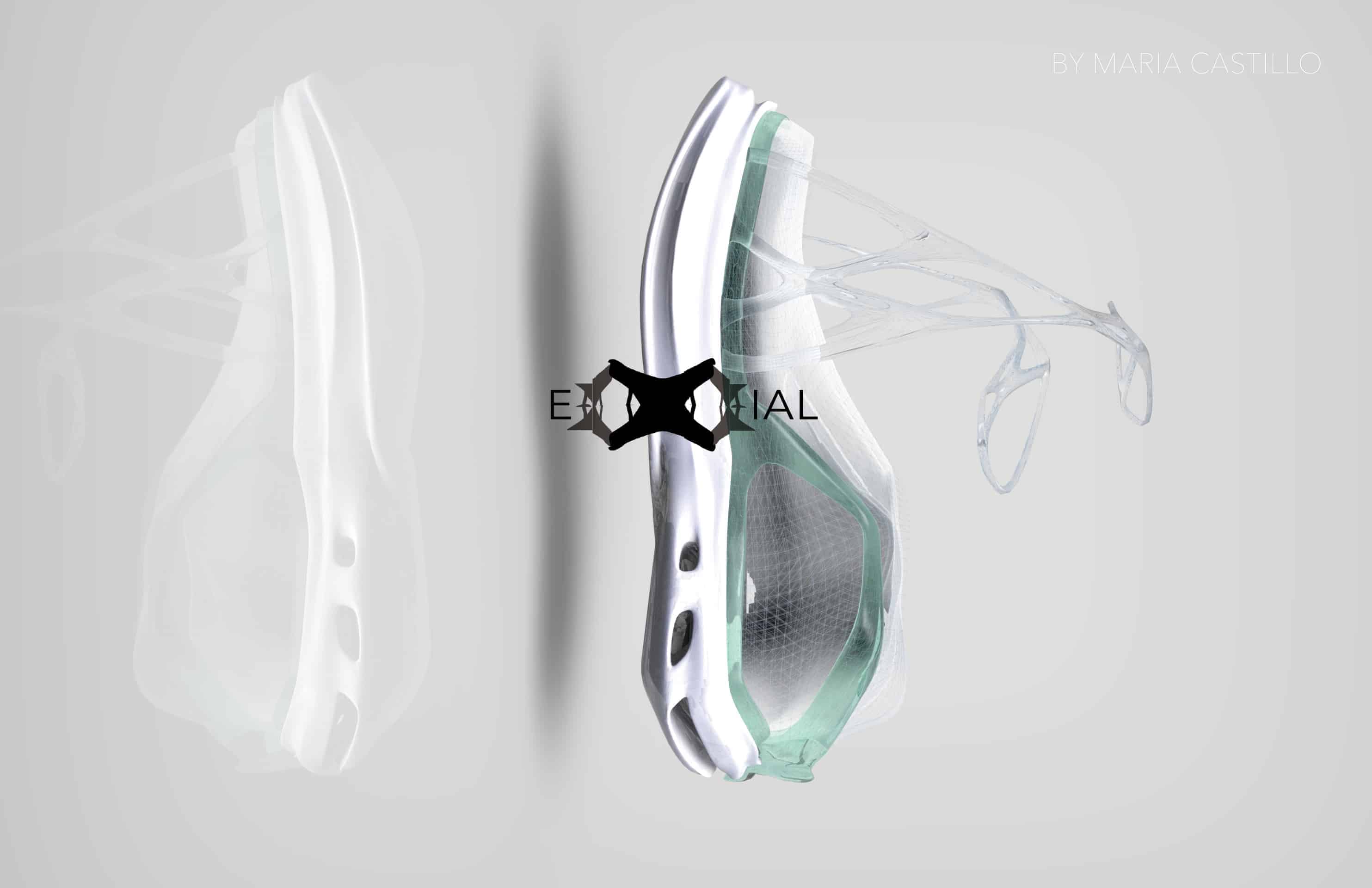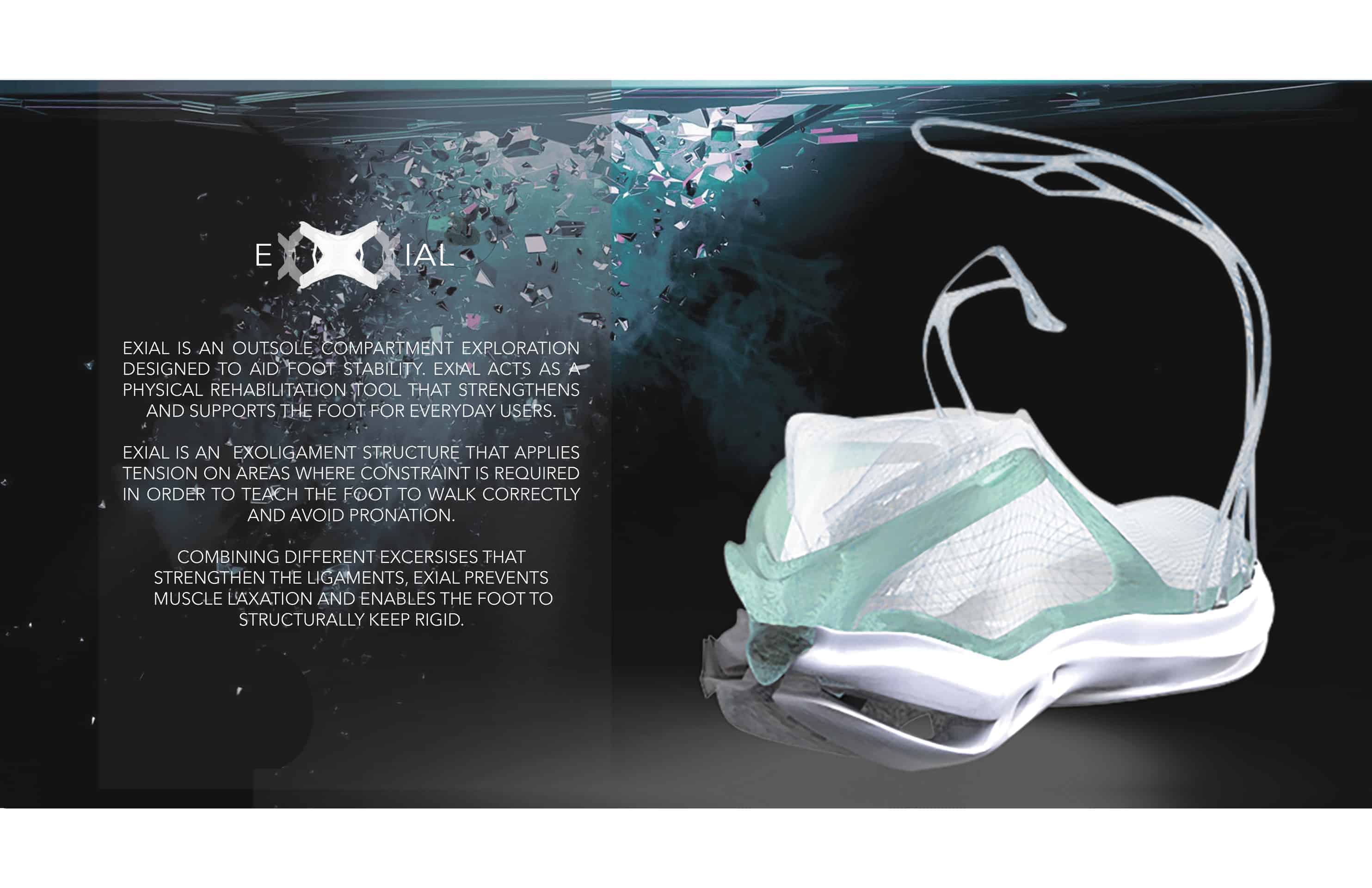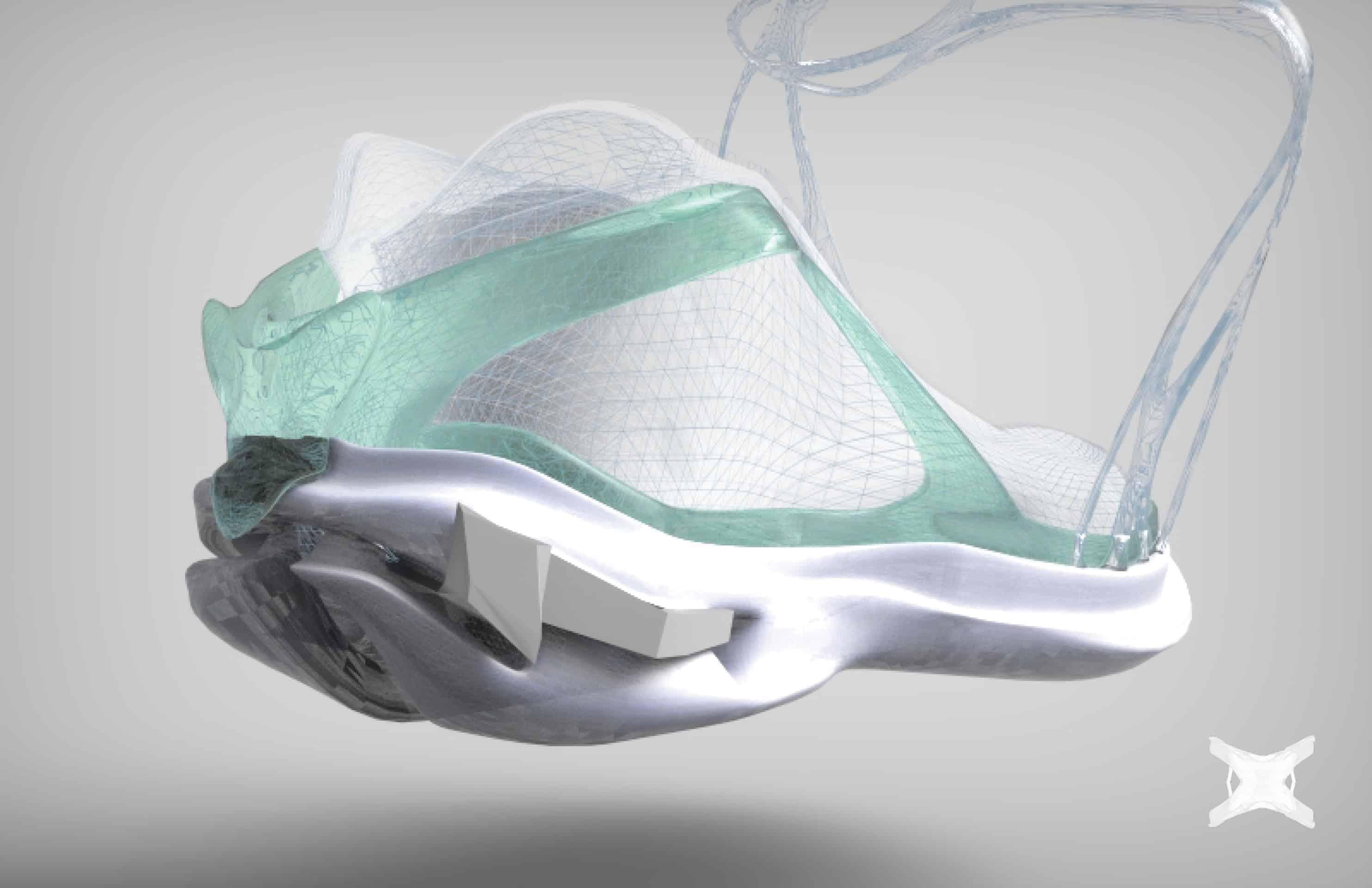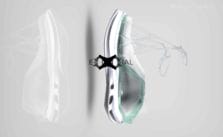Exial by Maria Castillo
Maria Castillo's Exial is an outsole compartment exploration designed to aid foot stability. It acts as a physical rehabilitation tool that strengthens and supports the foot for everyday users. Exial is an exo-ligament structure that applies tension on areas where constraint is required in order to teach the foot to walk correctly and avoid pronation. Combining different excursuses that strengthen the ligaments, Exial prevents muscle laxation and enables the foot to structurally keep rigid.


This is my Junior year Industrial design project at Pratt institute. I started with a user with this pes calvus foot deformity. This is a very severe high arch foot which consequently compromises the stress on foot ligaments, Achilles tendon and so originate other more severe long term issues like back or knee problems. I tried to aim for tendon elongation and ligaments strengthening in order to help the body realign to its neutral position. This is a long term solution rather than the insoles usually provided to users with severe problems. Exial started with a severe foot deformity case, but is a universal design which aims for the everyday user. I chose the materials needed to perform the level of elasticity I needed. I directed my cool color palette more towards blue and white to portray this medical aspect of this everyday used tool. I kept the physical therapy aspect of the shoe as aesthetic in order to make it suitable for users to use everyday.
- Maria Castillo

I started with physical models to test its functional aspect. After revising the design for the sole to perform correctly, I followed with some digital ideation on Autodesk Maya. I 3D scanned my foot in order to build in the right proportions. This file was imported into Maya, where I started with my first iteration of the outsole. I 3D printed this model in the Makerbot in order to understand better and analyze the form. From there, I revised the overall proportions, the style of some parts in relation to its functionality and then tried it on in order to fully understand it. Then, I followed to do a second iteration on Autodesk maya. This was a bit more thought through from the users perspective. the ankle exoskeleton was right on place, I included come hooks in it in order to constrain the elastic bands on place. I also cut down the hill for the user to improve the stride when in use. The triangular hooking system placed at the back was simplified for it to be visually better understood by the user. Again, this was 3D printed on the Makerbot printer in order to validate or revise some aspects.
- Maria Castillo

Simultaneously, I did several tests for the elastic bands that would be embedded on the outsole. I tested the different patterns and their deforming capabilities when under stress. Also, the elasticity of the material was tested in relation to the patterns selected. I laser cut the pattern in different thicknesses of rubber, silicone, neoprene, etc. For my final aesthetic model, I 3D printed the bottom part in white PLA plastic and the upper part on clear resin. I sowed the fabric and added into my 3D printed outsole composition in order to give a better understanding of the piece on context. Finally I used laser cut silicone to complete my shoe aesthetic model final composition
- Maria Castillo


When exhibited on Pratt Institute's Industrial design view I got very good response. The aesthetics proposed within functionality were very interesting and intriguing for viewers. People would be attracted to the digital renderings and compositions proposed on my introductory posters. Viewers felt more intrigued and engaged with the project given to the different 3D printed models showcasing each stage of the project. Also, my concept was very well critiqued by other professors and alumni from Pratt as a product that engages two contexts; physical rehabilitation and self care, with shoe wear and users everyday use. I learnt that visuals and aesthetics are important for viewers to fully understand your concept and design proposal. In the future, I will remain cautious with my aesthetic and real.
- Maria Castillo


As a current Industrial design student at Pratt Institute and my experience as a high performance Track and Field athlete I developed interest in the area of wearable design. I have won three consecutive National championships in 100m track and Field events and I have also represented my country in international events. I sowed my interest in wearable product design which now is growing within me as a designer. Recently, I developed a prosthetic leg for below the knee residual limb amputee soccer players. This project was archived at Pratt Institute and is still displayed in Pratt Institute's Design showcase as an example of a successful composition of form and function.
- Maria Castillo

Exial, embodies part of my personal experience as an athlete. Because of a traumatic injury, I have unconsciously began to pursue opportunities for athlete recovery. When competing for my fourth title as a Peruvian national champion, I broke ligaments in my foot due to instability and needed to undergo surgery. It followed with months of physical rehabilitation and surgeries which made me fully aware of foot anatomy and the problems that led to my injury which could have been prevented. Exial is a representation of my insight as an athlete. I took into consideration specific physical therapy knowledge and foot performance to prevent further problems caused by early anatomy issues.
- Maria Castillo
About Maria Castillo
Maria Castillo consider herself a very self-motivated and passionate designer. She was taught mainly by her mother and father who always fought for their beliefs and aspirations. Being born and raised in Lima, Peru gave me a great personal interest for innovation, efficiency and the aim for success. Last year, she was granted with Rowena Reed Design Award scholarship at Pratt Institute, which honors her skills to express form and spacial relationships within the product. She have also been on the Pratt Institute's President list for 2014 and 2015, accumulating a GPA above 3.8.
Her passion and motivation as a designer was originally taught by her mother and father and followed by her track and field experience. That has been represented through her recent designs as a student. She believe that her personal experiences and the support of her family are her motivation to produce strong designs.
